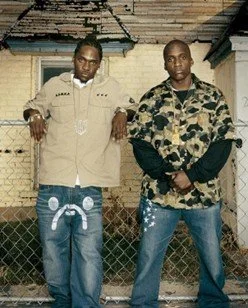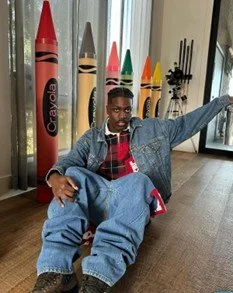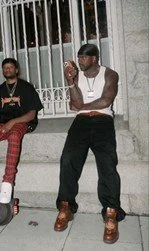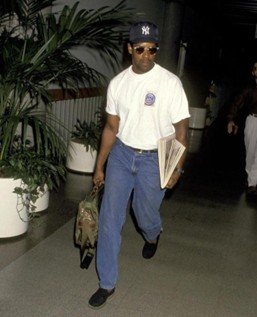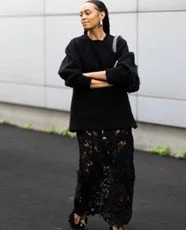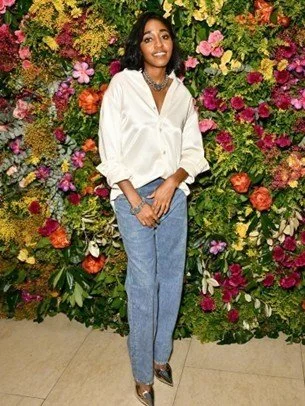Fashion’s Never-Ending Cycle of Trends
Throughout the years, there have been many trends and ideas that come and go just for them to be recycled again. Some popular ones include the Y2K Aesthetic, Prep Style, '90s Aesthetic and Minimalist Style. These are all trends that we have seen in older media—whether a TV show, movie, magazine or even pictures of older family members growing up.
When it comes to fashion, trends are usually recycled. The main reason: there’s nothing left to offer. Today, many boundaries have already been pushed, broken and remixed multiple times. The visual and stylistic vocabulary of fashion has expanded to such a degree that most new trends are really just re-contextualization of the past. Designers now just referencing, sampling and reinterpreting existing ideas rather than creating something original.
The Y2K trend includes clothing or pieces characterized by a futuristic, optimistic and sometimes quirky aesthetic. Usually, the pieces that are associated with this trend include low-rise jeans, chunky shoes, mini skirts and some loud colors. Now, Y2K fashion is seen as fun and “cutesy,” which is the trend Gen-Z is currently tapping into.
While the clothing itself isn’t new, what can be offered to consumers is a new experience whether that’s through styling, storytelling or the way it's presented. Things like nostalgic marketing, social media challenges or limited drops inspired by early 2000s moments can make it feel fresh again. At this point, it's less about inventing something new and more about finding new ways to connect with the trend and the feeling it brings. That’s also why there aren’t many new ideas left to create because the actual style has already been done. What’s changing is how it’s served and who it’s for.
Older Examples
NSYNC, photo credit: Shutter Shocks (2001)
Destiny Childs, photo credit: Getty Images (2001)
Current Examples:
Bella Hadid, photo credit: The Image Direct
Tyla, photo credit: Bose
Prep style, at one time, was a symbol of class and wealth. It represented a certain type of person who wore it. Now, there are multiple brands—such as Aimé Leon Dore, Lacoste, Noah Clothing, Golf le Fleur and Martine Rose—that have taken a different approach to classic preppy style—like polos and suits—and made it more affordable and accessible. As a result, many younger people are buying into this aesthetic and mixing with other styles.
Even though the look isn’t new, what makes it feel fresh is how it's being reworked and styled today. There’s room to offer consumers new combinations, unexpected pairings and inclusive branding that flips the old meaning of prep on its head. It's less about the clothes themselves and more about how people are using them to express identity in a way that feels personal and current. But again, when you really look at it, the base of the trend hasn’t changed much. It’s the meaning and consumer that’s shifted, which shows how fashion isn’t really offering new ideas, it's just remixing the same ones in different ways.
Boyz II Men, photo credit: Ron Galella (1994)
“Clueless,” photo credit: “Clueless” (1995)
Now Examples:
Tyler, the Creator, photo courtesy of Tyler, the Creator’s official Instagram
Rihanna, photo credit: Shutter Shock
The 90s aesthetic has, and still is, heavily influenced by hip-hop. Even though the clothing pieces themselves aren’t new, what can be offered to consumers now is a fresh take through storytelling, collaborations with current rap artists or even reimagining old-school looks with modern cuts and materials. At this point, it’s not about reinventing the style, it’s about making it feel personal and relevant to this generation.
Old Example:
Clipse, photo credit: Mass Appeal Magazine, Issue #39 (2006)
Dipset, photo credit: Kenneth Cappello (2006)
Now Example:
Lil Yatchy, photo courtesy of the official Instagram of Lil Yatchy
Skepta, photo courtesy of the official Instagram of Skepta
Minimalist style is an aesthetic that is simple and neutral. While it may not be flashy like some of the other trends on this list, you can always add accessories to spice up the look, whether it’s a watch, jewelry, hat or even a bag.
Because minimalist fashion focuses on timeless basics and clean lines, there isn’t much new to invent in terms of shapes or colors. The innovation today comes from how these simple pieces are combined, the quality of materials and how the style fits into people’s lifestyles.
Denzel Washington, photo credit: Getty Images (1992)
Jennifer Aniston, photo credit: Online USA (1996)
Now Examples:
Solange, photo credit: Getty Images
Ayo Edebiri, photo credit: Getty Images
Fashion now is a cycle of trends that have been revised with newer elements added to them. As for the future of fashion, it seems to be less about creating something brand new and more about figuring out which older trends can be brought back and reworked for the upcoming generations. At this point, most of what we see has already been done before—it’s just being presented in a different way. While the cycle of trends will always be repeating, that doesn’t mean a different take or feel can’t be added. What’s important is how we reinterpret those trends through our own personal style and perspective. With advancement in technology and constant culture change, there is still space for new ideas, silhouettes and stories to come to life. The next step in fashion is as simple as looking at our everyday life and past lives and mixing it with who we are.










